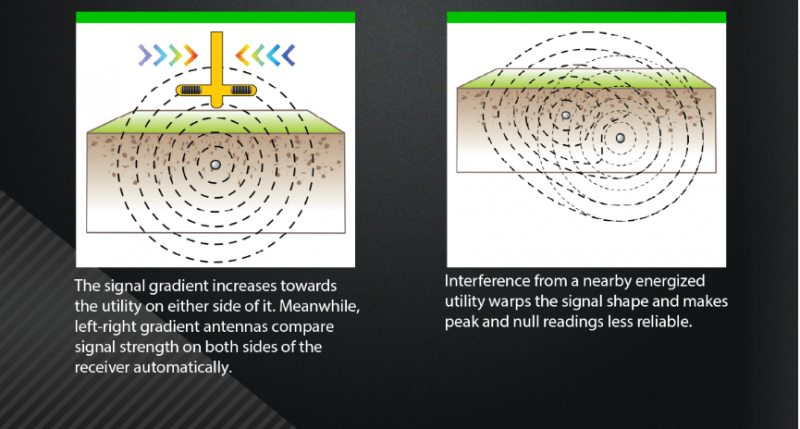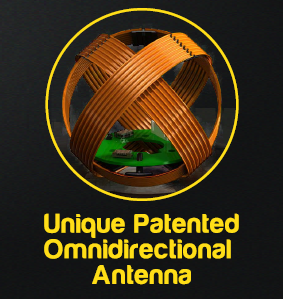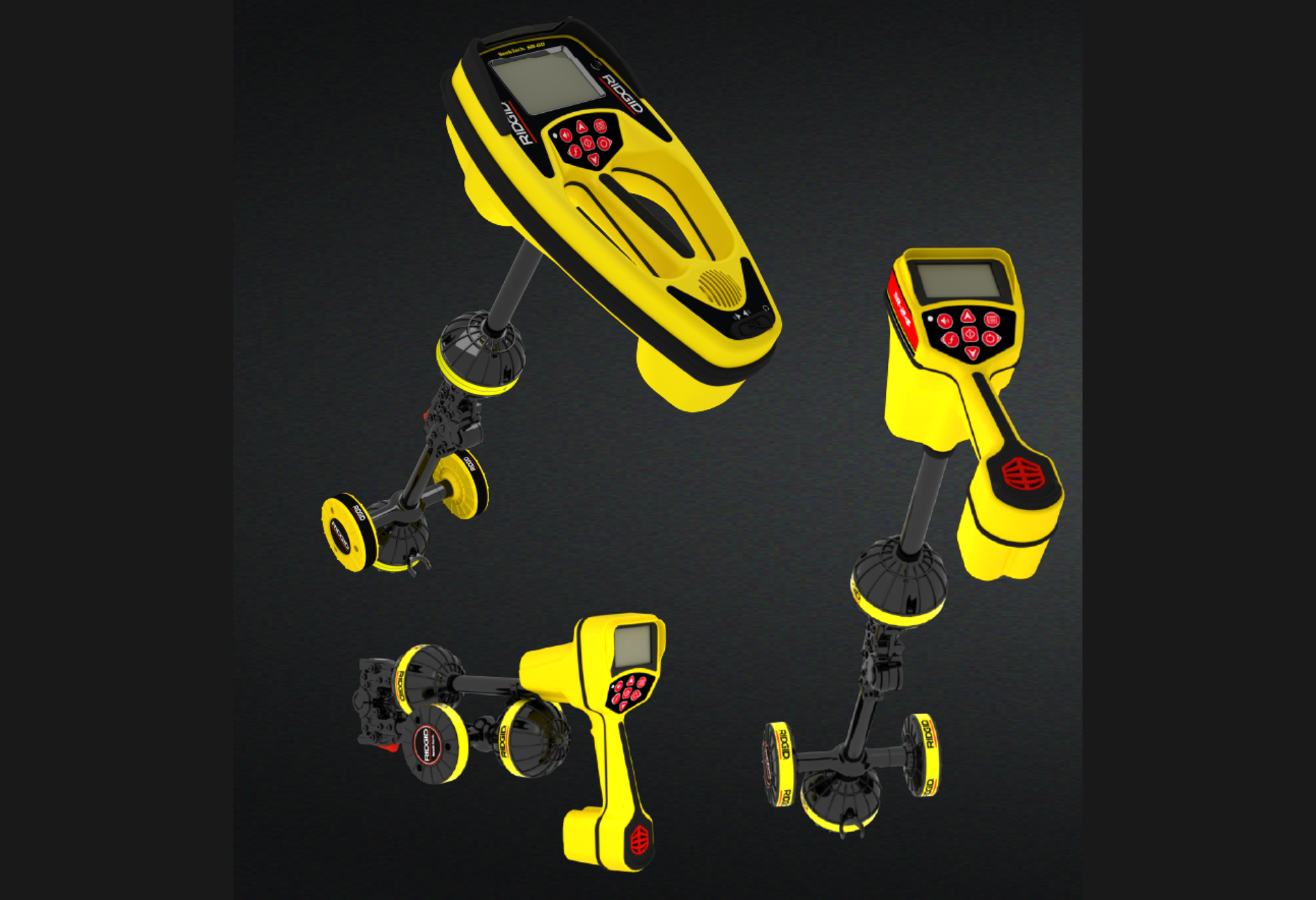The SeekTech Difference
Utility locating requires users to infer the location of a cable or pipe by interpreting information provided by the receiver. Receivers display information about the signal based on a model that assumes the signal field is perfectly round. When the signal field is round, the cable or pipe’s inferred location should be accurate. But when the shape of the signal field is distorted by metallic objects or competing signal energy on adjacent conductors, accuracy may be compromised.

The signal’s position is represented by a line on the screen. Move or turn the receiver in any direction and the line instantly responds to show the signal’s position in relation to the receiver.

Move the receiver until the line is centered on the screen: if the signal is round, the line appears sharp; if the signal shape is distorted, the line appears blurred – and the amount of blur is proportional to the distortion. The left/right
guidance arrows are powered by the dual gradient antenna system and provide a “second opinion” on the utility’s position.
The signal gets stronger as you move closer to the utility and is unaffected by the receiver’s orientation; rotate the receiver and the signal strength remains steady. The depth reading is automatically displayed when you’re close to
the signal and remains steady as the receiver is rotated.
Conventional receivers employ basic antennas and electronics to convey limited information about the signal: whether you are getting closer to it or moving farther away. The antennas used are directional and must be aligned with the signal to properly detect its strength. Receivers with a compass make it easier to align the antennas with the field but cannot tell you where the field is in relation to the receiver.
Conventional receivers cannot determine whether the signal is round or whether its shape is distorted. To make this determination users must perform additional steps and interpret the results. Determining whether or not the signal is round requires training and extra steps at multiple points throughout the locate and is therefore generally avoided.
Key SeekTech Differentiators
- Don’t rely on signal strength alone to determine a utility’s position. Gradient measurements, in particular, are usually more accurate
- A mapping display shows the orientation and relative position of a utility. The compass is a reaction to this technology.
- OmniSeek is a patented passive locating mode that looks for repeating patterns of energy in a broadband frequency spectrum (1 Hz to 35 kHz). OmniSeek can lock on to any signal in that range, eliminating the need to find passive locate signals by trial and error.



